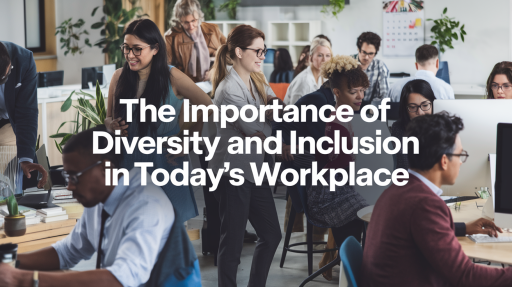Workplace diversity and inclusion are essential supplements to the place of any organization in today’s tangled business world. Diversity at the workplace does not only include effective innovation but also productivity, creativity, and employee satisfaction. Companies that hold and promote an inclusive work culture in their organizations hire the best talent from the job market, enhance decision-making, and boost the level of engagement of the employees with the firm.
This article will discuss the why and how of workplace diversity and inclusion for the organisations; that is, the reasons as to why it is vital in the modern workspace: the benefits it brings to an organisation plus the best strategies to implement an inclusive work culture.
For more information: Business Ideas and Investments Opportunities
What is Workplace Diversity and Inclusion?
Understanding Workplace Diversity
Workplace diversity and inclusion are broad terms referring to the type of employment that is open to individuals of all forms of races, genders, ages, religions, disabilities, and sexual orientations. Diversity is an aspect of acknowledging, respecting, and valuing differences among the employees. The value of having a diverse workforce is usually the perspectives that come along with them, leading to solving problems better and innovating.
Defining Inclusion in the Workplace
While diversity allows representation, inclusive work culture where every employee will feel valued and respected. Inclusivity creates an environment in which all individuals will have equal opportunities for growth and contribution. Most companies with a strong inclusive work culture make sure that the work atmosphere feels safe, heard, and empowered to articulate their ideas without fear of discrimination.
Why is Workplace Diversity and Inclusion Important?
1. Enhances Creativity and Innovation
It can be said that organizations that make efforts to advocate for diversity and inclusion do so from the varied perspectives of their employees.Multiple backgrounds would have different and unique ideas brought by these employees, thus creating new avenues for creative problem-solving and innovation. Inclusive work culture will breed in a company with no differences in a workplace because the majority of ideas brainstormed will come up with the best solutions.
2. Increases Employee Engagement and Retention
Employees are less driven to work in a company that does not have feelings of respect and value. In this context, it shows how inclusive work culture creates or gives the employees a sense of belonging, possibly leading to job satisfaction and decreased employee turnover. Research shows companies with strong workplace diversity and inclusion policies have a more engaged workforce.
3. Improves Company Reputation
Positive brands are among key dividends from what businesses will get as an outcome of their workplace diversity and inclusion. Following this, consumers will prefer brands that appreciate diversity, while highly capable professionals are more willing to enlist in organizations that offer an inclusive work culture.
4. Expands Market Reach
A diverse workforce gives more opportunity to businesses to relate or connect with global markets. Different backgrounds from different employees will be able to show understanding of cultural nuances so that businesses are able to target a broader audience. Workplace diversity and inclusion can provide more insight into the demographic differences, making the marketing strategy more effective.
5. Enhances Decision-Making and Problem-Solving
Decisions made by such companies are usually good decisions because a heterogeneous team considers more than one angle before making any judgments thereby reducing biases and blind spots. According to research, companies with strong diversity and inclusion strategies are proven to be the ones that solve problems faster and innovate better than their competitors.
6. Ensures Compliance with Legal and Ethical Standards
It is true that many countries have laws that require all organizations to draft their policies regarding workplace diversity and inclusion. An organization that does not create an all-inclusive work culture can be subject to lawsuits and also face a bad name. Diversity will then help these organizations comply with their legal obligations in addition to ethical Leadership.
Read our Blogs: The Future of Gig Economy and Its Impact on Business Growth
How to Build an Inclusive Work Culture?
1. Implement Strong Diversity Hiring Practices
Recruitment strategies should seek to hire individuals from diverse backgrounds. Human resource teams must be active to tap into a variety of talent pools for workplace diversity and inclusion. Companies should remove all bias with respect to job description, interviews, and the overall hiring process.
2. Provide Diversity and Inclusion Training
Organizations should roll out regular training programs on workplace diversity and inclusion. Employees should be enlightened on unconscious bias, cultural sensitivity, and inclusive communication. Training raises awareness and nurtures an inclusive work culture within the workplace.
3. Encourage Employee Resource Groups (ERGs)
Employee Resource Groups (ERGs) play an important role in workplace diversity and inclusion. An ERG is a formality by which employees come together, share their experiences, and provide support to each other. Companies that have a really good inclusive work culture tend to have membership opportunities for ERGs of all different communities.
4. Establish Inclusive Policies and Benefits
Organizations should create and enact policies to promote work-life balance, parental leave, mental health support, and equal pay. An inclusive work culture ensures that an employee, whatever the background, accesses the same opportunities with respect to benefits.
5. Promote Leadership Diversity
Team of leadership should be a mirror of the workforce. Firms having a diverse top management are more likely to be successful in pushing down workplace diversity and inclusion efforts. A strong commitment from top management would drive inclusive work culture within the organization.
6. Foster Open Communication
Inclusive work culture comes from open and transparent dialogues. These safe spaces should be created in organizations where employees feel free to voice their issues. Feedback mechanisms and complaint redressal related to discrimination can strengthen workplace diversity and inclusion.
7. Celebrate Diversity in the Workplace
Organizations should celebrate cultural events, heritage months, and awareness days to support workplace diversity and inclusion. Employee recognition and appreciation of various backgrounds should foster an inclusive work culture.
Measuring the Success of Workplace Diversity and Inclusion
1. Conduct Employee Surveys
Typical surveys could be used to assess how employees feel about workplace diversity and inclusion. The feedback from surveys usually gives an indication of what else needs to be improved.
2. Monitor Hiring and Promotion Data
Monitoring hiring and promotion data can help ensure that diverse groups are properly represented. Organizations that have strong workplace diversity and inclusion policies use demographic analysis to analyze their workforces against their diversity measures.
3. Assess Employee Retention Rates
Increased retention signals a favorable and inclusive work culture. Turnover data must be analyzed for companies to determine if diversity issues are occurring.
4. Benchmark Against Industry Standards
Organizations should benchmark their workplace diversity and equal opportunity initiatives against industry leaders. By studying the successes of other companies, one would adapt their policies to create a more inclusive work culture.
Youtube link: Entrepreneur India
Conclusion
Gone are the days when companies could simply consider workplace diversity and inclusion to be optional-however, thriving in today’s competitive market requires these factors. Companies with an inclusive work culture generate higher levels of creativity and innovation, employee happiness, competitive advantage, and market growth.
To continually stay a step ahead, organizations have to keep changing their workplace diversity and inclusion strategies. Businesses that create friendly and diverse environments would guarantee long-term success and augmented reputation and will be the ones driving sustainable growth.
The workplace diversity and inclusion factor is just the future of business. The sooner companies put an inclusive work culture in place, the more extensive will be their competitive advantage.






